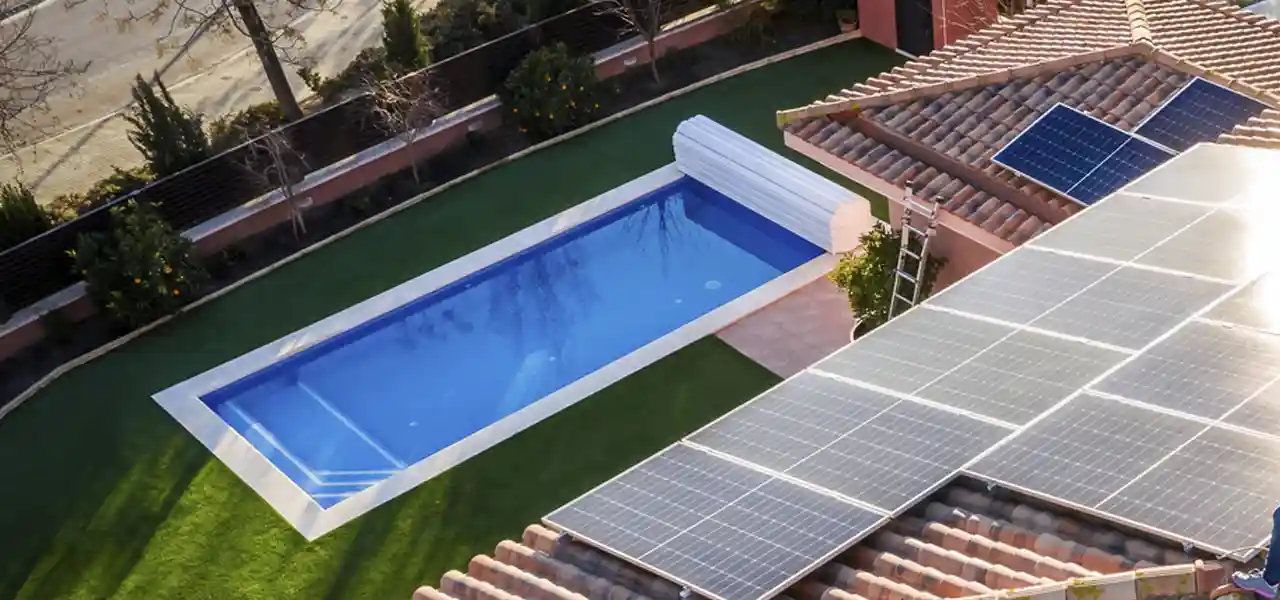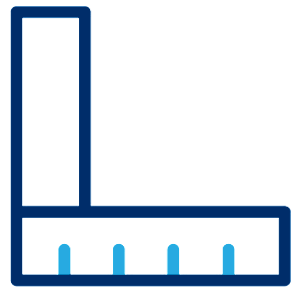FREE Standard Shipping On All Orders $100 or More!*

Solar Pool Heater Sizing Guide
When sizing a solar pool heater to a pool, we consider pool size, in area and gallons, your desired temperature gain, and other environmental factors such as wind and sun exposure. Solar pool heaters work well in all parts of North America, and in fact, many solar pool heater manufacturers are based in Canada, where solar pool heating is popular. But not all houses or yards lend themselves to solar heaters, because you need plenty of space for unobstructed sun for 4-6 hours per day.
Solar panels can be placed on a sunny roof of the house, garage or shed. A rack or shade structure can be built facing the sun. For smaller above ground pools, they can simply be put on the ground next to the pool. Here are the factors to look at when sizing a solar pool heater:
Pool Size

You should have half of the pool surface area in solar panels. The surface area of your pool is found when you multiply length by width of your pool. For example, a 16 foot by 32 foot pool would have 16x32=512 square feet of surface area. Round pools use the formula of pi times radius squared. For a 24-foot round pool, it's 3.14 x144=452 square feet.
Panels are modular in that you connect them together. You can use panels that are 4'x10' in size (40 sq. ft.) or the longer 4'x20' panels (80 sq. ft.). The more panels you connect together, the more heat you can generate.
Here's a solar panel sizing chart that you can use, based on installing roughly enough solar panels to equal half the pool surface areas.
For homes without optimum sun exposure or roof space for solar panels, consider these options:
- Build a pergola style structure on the sunny side of the pool.
- Build a solar rack with lumber into a sunny hillside.
- Build a solar rack in any sunny area within 100 feet of the pump.
Inground or Above Ground?
Above ground oval pools, without a deep end, have as much surface area as an equally sized inground pool, but without a deep end, there is much less water to heat. However, above ground pools have more heat loss through the sides or walls of the pool, which is reduced on inground pools. So, it may equal out.
Windy or Calm?
As with all of our pool heater types, we ask how much wind your pool receives. Pools in coastal or mountain areas, or other windy areas, may think about adding an extra solar panel to compensate for the wind's heat theft. Using a cover or installing windblocks like fences or hedges can help reduce the problem.
Manual or Automatic?

Solar pool heaters can be operated with a solar controller, which increases performance and efficiency. It does this by bypassing the solar panels when conditions are not optimum for heating — during cloudy or rainy periods. Sensors monitor the temperature of the water and of the panels, and an automatic valve sends water to the solar panels when the sun is shining. A thermostat allows you to set a desired temperature for your pool.
Most above ground pools don't install a solar controller, although they could. I always recommend the solar controller to anyone with a larger solar system, because it maximizes heat output and makes it automatic! Without a controller, heat losses offset heat gains during cloudy, rainy and windy periods of the day.
Those without a controller may want to add additional panels to offset the heat losses or plan to monitor it closely.
Covered or Uncovered?
A covered pool retains 70 percent or more of the heat put into it, much of which can be lost in cool overnight hours. If you plan to cover the pool consistently, you could install fewer solar panels than is recommended in the chart above.
Solar blankets, liquid solar blankets, or automatic pool covers will reduce the demand on the solar heater and allow you to install fewer solar panels or heat the pool in less than optimum sun exposure conditions.
Sunny or Shady?

The best conditions for solar are panels facing a southerly direction and receiving 5-7 hours of unobstructed sun per day. That's not always possible, so if you have less, you could install more panels to compensate.
You can also place panels in different areas; they don't all have to be all installed one array. They can be on different roof areas, or some panels can be rack mounted and others roof mounted. And they don't need to be right next to the equipment either. You can run pipe underground to and from your solar panels.
The great thing about solar pool heating is that you can always add more panels. Another great thing is the free heat and no maintenance that these systems give.